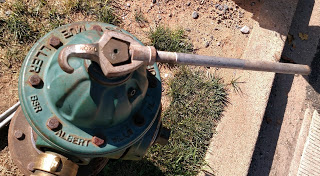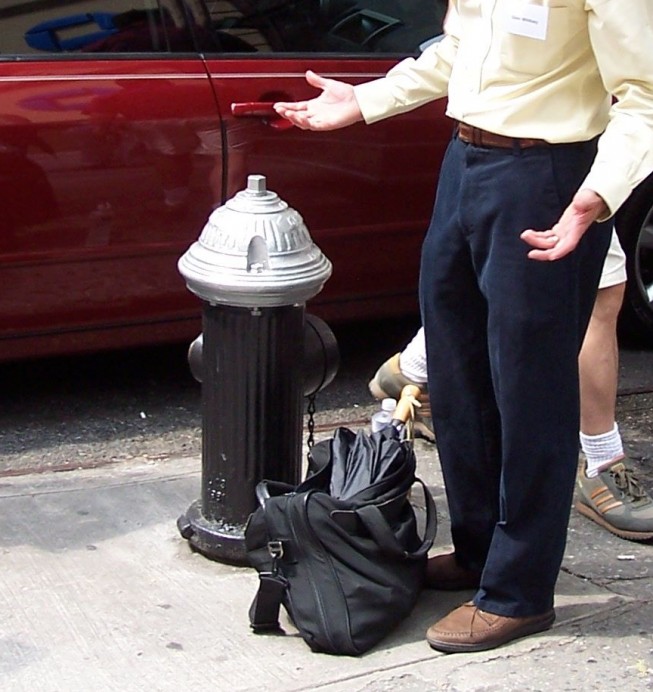You might be doing a shape scavenger hunt and want to add the otherwise elusive regular pentagon to your list of shapes, or you may just want to ask what interesting geometric shape do your participants see on this everyday item, but either way, take advantage of the fact that fire hydrants in many municipalities employ bolts with regular pentagonal heads. You can dig a little deeper and ask, “Why?” Here are some reasons that have come up:
- Since the regular pentagon has an odd number of sides, no two sides are parallel. Hence ordinary wrenches, which are based on gripping two opposite parallel sides, cannot grip on the pentagonal shape, reducing the chance that unauthorized people can tamper with the hydrant. Instead, you have to use a special tool:

that only firefighters have. - The special hydrant wrench actually grips on three sides of the pentagon, instead of the two for usual bolt/wrench combinations, meaning that you can still operate the bolt even if it is worn/damaged.
- The unusual shape serves as a flag/reminder that hydrant bolts turn righty-loosey instead of lefty-loosey.
This last item can serve as a jumping-off point for a discussion of how in three dimensions we can have two structures that are mirror images of each other, and yet cannot be superimposed on each other. Such objects are called chiral. Thus, there is such a thing as a left-handed or right-handed screw, and the direction of turning to tighten or loosen is opposite depending on which type of screw it is. Another illustration of the usefulness of the ability to have two different handednesses is that the early New York subways were lit using light bulbs with left-handed threads. Riders therefore could not unscrew the subway bulbs and use them at home, because they simply would not screw into ordinary right-hand threaded lamps. Thus, the basic mathematical phenomenon of chirality enabled a theft-prevention measure.

















